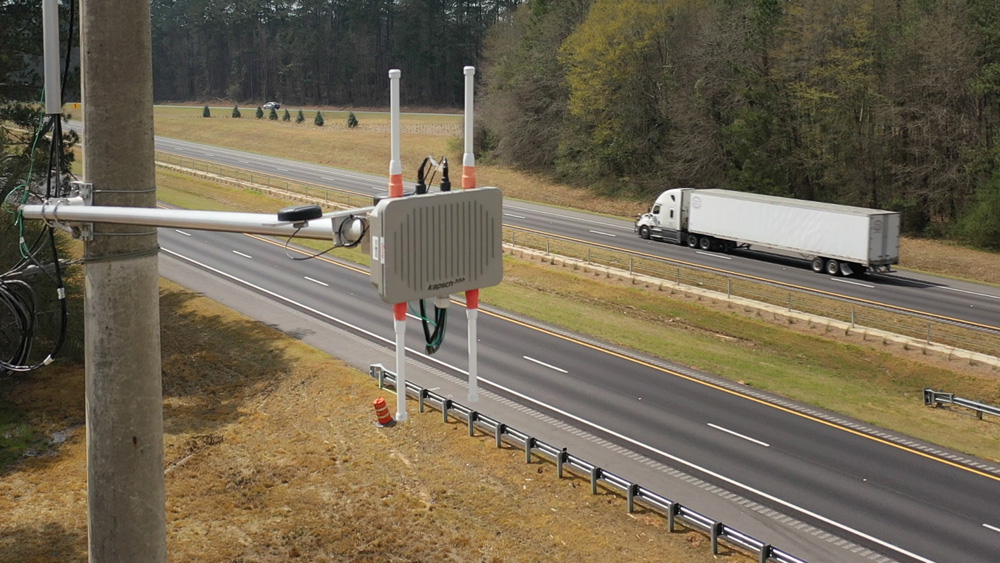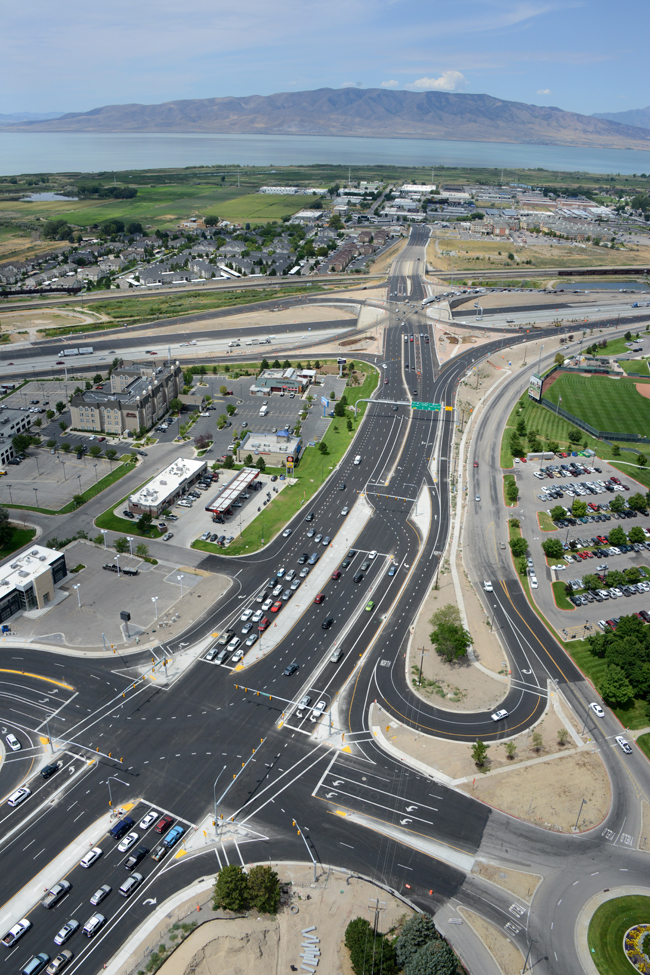
Colorado needs traffic and transport solutions – and fast. The US state’s population has grown 50% in the last 20 years and another 50% hike is predicted in the next 20. It also spends more than $13 billion in roadway crash costs each year. In 2015, 546 people died in traffic-related crashes, and more than 3,000 were seriously injured. The state’s authorities know that widening roadways and adding lanes is expensive – and that building more roads is not the answer to both demographics and to moderating driver behaviour, anyway. Instead, through its RoadX programme, Colorado is looking to technology in order to uncover the potential to make driving easier and safer.
Last year,
Panasonic is working with
Real excitement
C-V2X direct communication is designed to offer vehicles low-latency communications for V2V, V2I and Vehicle to Pedestrian (V2P) without the involvement of a cellular network, by operating on the 5.9 GHz ITS spectrum. Tests have shown that C-V2X direct communications can demonstrate twice the range of 802.11p radio technology, and offer greater reliability.
There is a sense of real excitement here. Michael P. Lewis, executive director of CDoT says he is “encouraged” by progress, adding that the department is “ready to help advance vehicle safety and serve as a hub for advanced vehicle testing, and development”. Jarrett Wendt, executive vice president for strategic initiatives at Panasonic Enterprise Solutions Company, comments: “The promise from efforts such as those taking place in Colorado are extraordinary.”
Don Butler, Ford’s executive director, connected vehicle platform & product, says: “Initial field test results demonstrate that C-V2X is the clear choice for the global solution for V2X and the deployment of C-V2X in Colorado will further support this.”
What happens in the US will certainly be seized upon by other interested parties around the world. C-V2X is designed to be globally compatible with 5G and to complement other advanced driver assistance systems (ADAS) sensors, such as cameras, radar and light detection and ranging (LIDAR). C-V2X trials are under way in Germany, France, Korea, China and Japan, as well as the US.
Panasonic developed the Cirrus software platform to allow DoTs to deploy such technology across a region – or even a whole state. Unveiled at September’s
The sort of transport data it throws up could lead to the immediate triggering, for instance, of snowploughs to the roads in winter storms – a highly relevant example in Colorado, a state that boasts the Rockies and some of the best-known ski resorts in the world.
Expansion model
In fact, the scheme has concentrated initially on the route from the state capital, Denver, to the ski slopes of Vail, along Interstate 70. The idea is that the 90-mile stretch, equipped with RSUs, will provide a template. “This is a model which CDoT can use,” says Chris Armstrong, director, smart mobility at Panasonic Corporation of North America. “They are planning to expand it to 1,500 miles across the state.”
As well as congestion problems on I-70, drivers have to contend with steep gradients, sharp curves, weather which is often severe, and potentially dangerous visibility issues. Panasonic’s system allows CDoT to share safety information on highway conditions, traffic alerts and other driving hazards – directly with vehicles and with people. “The potential to turn every vehicle into a sensor is a massive data opportunity,” Armstrong says.
Panasonic created the software as a service platform and opened it up for partners to use. This demonstrates a certain confidence: “You build the cookie jar and give away all the cookies,” he laughs. But there are opportunities now for others to innovate, using virtually endless new channels, and this reflects a more general business trend, Armstrong goes on. “The digital world is a very complex landscape,” he says. The idea that large corporations can provide everything that is required for any given operations is not tenable: “That world is going away.”
Something that is not going away is the issue of road safety. The statistics are sobering. The cost of all 2014 crashes in Colorado was $13.27 billion. As CDoT points out: crashes mean “time, money and immeasurable heartache”. Small wonder that technology is seen as a potential answer: indeed, the headline blurb about the Panasonic project suggests that Colorado DoT is looking to cut journey times by half and reduce accidents by 80% through its use of C-V2X. Armstrong emphasises that those figures refer only to crashes where a driver has not been using alcohol or drugs.
“The majority of multi-vehicle crashes are caused by situations that are completely preventable,” he explains. “Machines can, at the minimum, warn us and at the maximum, prevent non-impaired vehicle crashes.” Having said that, even though the 80% figure does not refer to all crashes, it is still a worthy goal.
Unprecedented data
“If we layer in V2I communication, we can treat our communication systems like true networks,” he goes on. When it comes to hardware for the Colorado project, Armstrong laughs. “The first thing I get asked is: ‘How much is your RSU?’ We don’t make one.” Kapsch does, however. And Panasonic has a vested interest in making the kit work out in the field, often in inhospitable conditions: “We’re heavily involved in production-grade deployment, how you make it reliable, secure, durable, rugged.”
Putting everything together gives transportation authorities the opportunity to access unprecedented amounts of data. CDoT estimates there could be as much as a 400% increase in roadway efficiency with wide-scale deployment of connected vehicle technology solutions. Across the state, V2X is estimated to generate more than two billion safety messages per hour from vehicles. To put that in context, Twitter averages 28 million tweets per hour – which means that the CDoT system would be processing 70 times more than is currently processed by the social media platform each hour. It means that data on icy road conditions can be passed to drivers well before they even start experiencing traffic delays – and much else besides. “It’s a whole new level of high-fidelity information,” Armstrong says. “V2X is about leveraging all those technologies.”
The transformation of Panasonic
Panasonic is well-known for its consumer electronics such as televisions and stereos. But times are changing and the Japanese company has reinvented itself as a corporate provider of technological solutions. The figures are instructive: in North America in 2008, 55% of its revenue came from consumer electronics and 45% from business-to-business (B2B) and business-to-government (B2G) activities. Fast forward 10 years and the figures have changed significantly: 90% is now B2B and B2G, with just 10% from things like Blu-Ray players, microwaves and cameras. “People know us for TVs and home phones,” says Chris Armstrong, director, smart mobility at Panasonic Corporation of North America. “But the company has changed, especially in North America. We’ve navigated that transformation.” It is certainly not all about the brand name either: Panasonic has a significant white label manufacturing operation which spans many industries. While its US HQ is in New Jersey, the company began a search for a location for its new smart cities venture, ending up in Colorado. Part of the reason that Panasonic set up its CityNow programme in Denver – after visiting 26 other cities – was that the state had invested in technology over the last couple of decades. But the political and business environment was also attractive. “We want CityNow to be an R&D and innovation centre, and we need the right stakeholders at the table,” Armstrong concludes.










